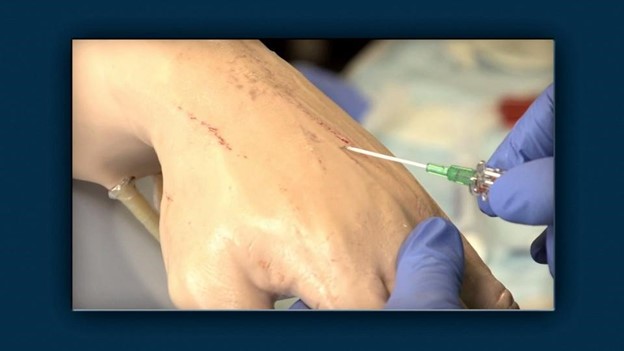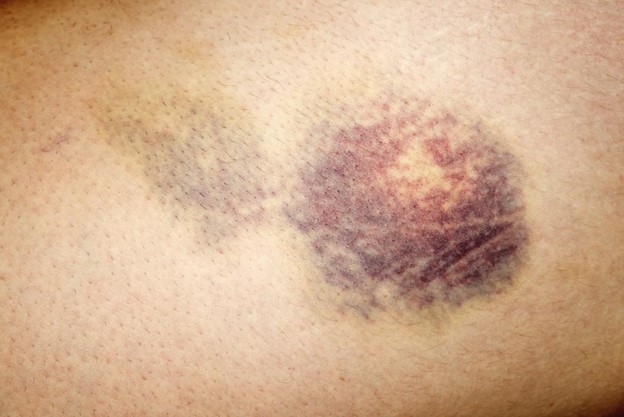A nurse in an emergency department is caring for a client.
A nurse in an outpatient orthopedic clinic is caring for the client six weeks following surgical repair of a fractured radius. Which of the following information provided by the client indicates improvement?
Select all that apply.
The client has gained 1.8 kg (4 lb). BMI is 18.9.
The clients adult child prepares two meals per day for the client.
The clients clothing is clean and appropriate for the weather.
The client receives three baths per week from a home care aide.
The client reports frequent toothaches and lack of dental care.
The client makes eye contact and smiles when speaking.
Correct Answer : C,F
Answer is… C and F indicate improvement.
A The client has gained 1.8 kg (4 lb). BMI is 18.9. This is not an improvement because the client’s BMI is still below the normal range of 18.5 to 24.9 The client may have malnutrition or other health problems that affect their weight.
B The clients adult child prepares two meals per day for the client. This is not an improvement because it shows that the client still depends on others for their basic needs and may have difficulty with self-care.
C The clients clothing is clean and appropriate for the weather. This is an improvement because it shows that the client has good hygiene and can dress themselves appropriately.
D The client receives three baths per week from a home care aide. This is not an improvement because it shows that the client still needs assistance with bathing and may have limited mobility or pain.
E The client reports frequent toothaches and lack of dental care. This is not an improvement because it shows that the client has poor oral health and may have infections or other complications.
F The client makes eye contact and smiles when speaking. This is an improvement because it shows that the client has positive mood and social interaction.
: https://www.hopkinsmedicine.org/health/conditions-and-diseases/distal-radius-fracture- wrist-fracture : https://www.nhlbi.nih.gov/health/educational/lose_wt/BMI/bmicalc.htm.
Nursing Test Bank
Naxlex Comprehensive Predictor Exams
Related Questions
Correct Answer is D
Explanation

This is because after puncturing the skin and the vein, the nurse needs to advance the catheter into the vein with the finger hub to ensure proper placement and prevent complications such as infiltration or phlebitis.
Choice A is wrong because flushing the catheter with saline should be done after securing the catheter to the skin with a transparent dressing and attaching a primed piece of extension tubing to the catheter.
Choice B is wrong because retracting the stylet should be done after advancing the catheter into the vein and releasing the tourniquet from the client’s arm.
Choice C is wrong because releasing the tourniquet should be done after advancing the catheter into the vein and before retracting the stylet.
Correct Answer is B
Explanation

A hematoma is a collection of blood outside a blood vessel that can cause swelling, pain, and bruising. It can indicate bleeding from the artery where the catheter was inserted, which can be a serious complication of cardiac catheterization.
The nurse should notify the provider immediately if a hematoma is observed.
Choice A is wrong because heart rate 90/min is within the normal range for adults and does not indicate a complication.
Choice C is wrong because bounding pulses in the affected extremity are expected after cardiac catheterization, as they indicate good blood flow to the area.
Choice D is wrong because report of discomfort at the insertion site is common and usually mild after cardiac catheterization.
The nurse can provide pain relief as needed, but does not need to notify the provider unless the pain is severe or persistent.
Normal ranges for heart rate are 60-100 beats per minute for adults. Normal ranges for blood pressure are 120/80 mmHg or lower for systolic pressure and 80 mmHg or lower for diastolic pressure. Normal ranges for oxygen saturation are 95-100% for adults.
Whether you are a student looking to ace your exams or a practicing nurse seeking to enhance your expertise , our nursing education contents will empower you with the confidence and competence to make a difference in the lives of patients and become a respected leader in the healthcare field.
Visit Naxlex, invest in your future and unlock endless possibilities with our unparalleled nursing education contents today
Report Wrong Answer on the Current Question
Do you disagree with the answer? If yes, what is your expected answer? Explain.
Kindly be descriptive with the issue you are facing.
